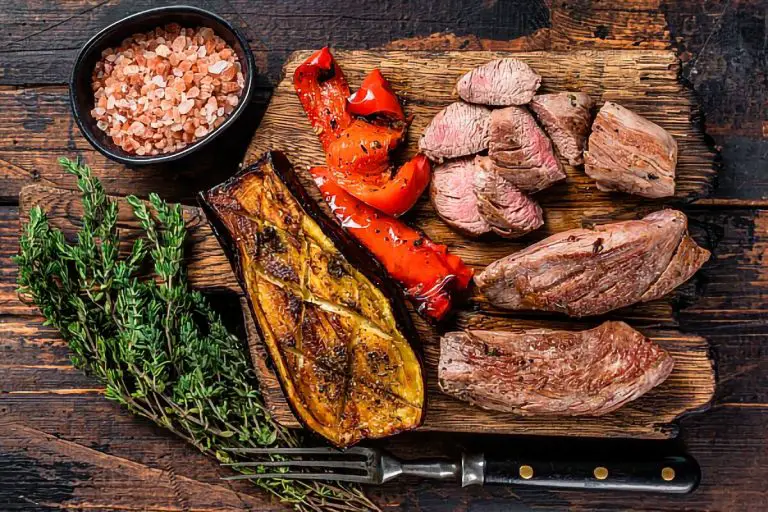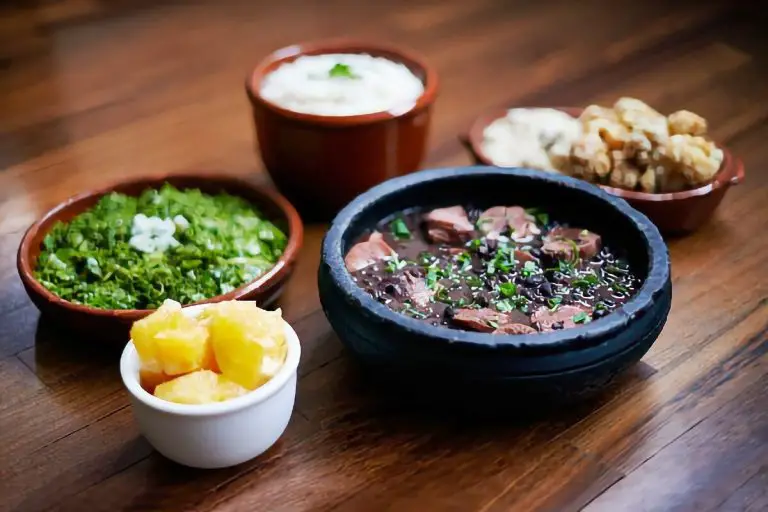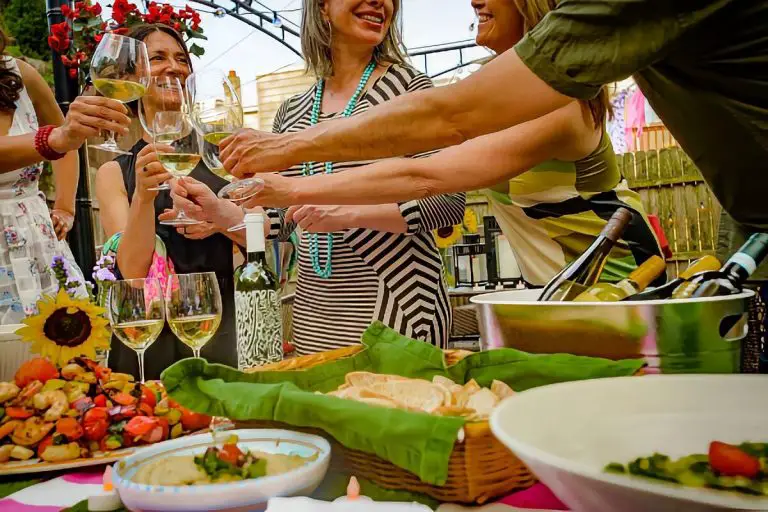Argentina Asado recipes arent just about grilling meat—it’s a whole event, really, where friends and family gather to savor simple, top-notch cuts cooked low and slow over wood or charcoal. At its core, an authentic Argentina asado comes down to patience, basic seasoning, and choosing the best meats—delivering those deep, smoky flavors that just about everyone craves.
Let’s talk about how you can bring that magic home. From hunting down the right beef to getting the hang of the slow-fire method, I’ll walk you through the steps for an asado that feels both classic and unforgettable.
I’ll also throw in some must-have recipes and sides—chimichurri, grilled veggies, the works—to round out the feast. So, maybe invite a few folks over, fire up the grill, and get ready for a meal that’s as much about the company as the food.
Argentina Asado Recipes Key Takeaways
- Patience and quality meat make all the difference.
- Cooking over wood or charcoal gives that deep, smoky character.
- Sides like chimichurri are essential for the full experience.
Essentials of Argentine Asado
When you picture Argentina asado recipes results, a few essentials always pop up. Picking the right meat, setting up the grill, understanding the different asado styles—each detail matters more than you might think. Nail the basics, and you’re already halfway to a proper asado, full of flavor and good vibes.
Key Cuts of Meat
It all starts with the meat. Beef rules here, no question. Asado de Tira (short ribs) are a staple—juicy, full of flavor, and perfect for that slow cook. Vacío (flank steak) is another favorite, with a tender bite and a crispy edge when grilled just right. And then there’s Entraña (skirt steak), rich in fat and best cooked medium-rare for max flavor.
You can’t forget Bife de Chorizo (sirloin steak), which is a lot like a New York strip, or sausages like Chorizo—they’re practically made for chimichurri. Toss in some Morcilla (blood sausage) for a bold, unique bite. Honestly, the meat you choose sets the whole tone for the asado, so it’s worth being picky.
Traditional Equipment
The real heart of asado is the parrilla—a grill built for slow cooking. Forget gas grills; the parrilla burns wood or charcoal for that gentle, indirect heat. This method keeps the meat juicy and infuses it with a smoky depth you just can’t fake.
Fire-building’s a slow game. We usually pile up hardwood embers—oak or quebracho are classics—then wait until they’re glowing white-hot before sliding them under the grill. That steady, even heat is key. A solid pair of tongs and a basting brush round out the must-have tools.
Types of Argentina Asado Recipes
Argentina Asado recipes arentjust one thing. Most often, it’s a grilled meat platter—various cuts cooked slowly over coals. We put thick cuts bone-side down first so the fat renders, then flip once or twice (no need to fuss).
There’s also choripán, the iconic sausage sandwich, which makes a killer starter. It cooks up quick over medium heat—perfect for snacking while the bigger cuts take their time. Grilled veggies like peppers and onions show up too, adding some color and balance.
And don’t overlook provoleta—that melty, herby provolone cheese. It’s usually served as a side or appetizer, and it’s honestly hard to resist. The combo of meats, sausages, and sides really shows off the range of Argentine asado.
Preparing the Perfect Fire
The fire can make or break Argentina Asado recipes. It’s about picking the right fuel and keeping a steady, gentle heat under the parrilla. Let’s get into how we choose wood or charcoal and manage those coals for just the right grilling conditions.
Choosing Wood and Charcoal
For a real-deal Argentine Asado, wood is the classic choice. We go for hardwoods—they burn longer, make better embers, and add flavor. In Argentina, Piquillin, Quebracho, and Chañar are the gold standard. They deliver on both heat and taste, unlike softwoods, which burn out fast and just don’t cut it.
If you can’t get the traditional stuff, try applewood, red oak, shagbark hickory, or beech. Wood gives that unmistakable smoky note you just can’t get from charcoal alone.
Charcoal lights up faster and cooks quicker, but honestly, it falls a bit flat in the flavor department. We usually stick with wood or at least mix in some charcoal to keep things authentic and tasty.
Managing Coals and Temperature
You want a bed of glowing coals, not big, showy flames. We start with a pyramid of dry kindling, leaving room in the middle for air. That shape feeds the fire and gets those embers going strong.
Once the fire’s roaring, we let it burn down until the wood’s turned into red-hot coals. That’s when you spread them out under the grill, with a few extras off to the side for topping up as needed.
As meat cooks, fat can drip and spark flare-ups, so we stay on our toes—moving meat or coals to keep the heat just right. It takes some practice, but managing the fire is half the fun (and maybe half the stress) of asado.

Classic Argentine Asado Recipes
Argentina Asado recipes bring to mind a table loaded with meats, each one cooked slowly over wood or charcoal. Every cut’s got its own personality, and how we handle each makes all the difference. Here are a few classics that always hit the mark.
Tira de Asado (Short Ribs)
Tira de Asado—short ribs—are a total staple. Their marbling and bones keep them juicy while they cook. We put them bone-side down at first, letting the fat render and naturally baste the meat.
Low and slow is the name of the game here, letting the ribs get tender and smoky. We keep seasoning simple—just coarse salt before they hit the grill. A side of chimichurri adds a bright, tangy finish that really pops.
Matambre (Flank Steak)
Matambre is a thin flank steak, often stuffed with herbs and veggies before grilling. It’s tender and full of flavor, but it cooks fast, so you’ve got to pay attention.
We usually spread a mix of onions, peppers, and seasonings over the meat, roll it up tight, and grill. The result? Unique texture, big flavors, and a little surprise in every slice.
It’s a lighter choice, especially with grilled veggies and maybe a glass of Malbec on the side. Not a bad way to round out the meal.
Chorizo and Morcilla
No asado feels right without chorizo and morcilla. Chorizo’s a fresh pork sausage with garlic and spices; morcilla is a rich, earthy blood sausage.
We grill chorizo over medium heat, turning often so it cooks evenly. Morcilla is more delicate and needs less time on the grill. Both go great with chimichurri or just some crusty bread.
They bring variety and a little richness to the table—plus, they’re perfect for kicking off the meal.
Pork Ribs and Other Cuts
Beef gets the spotlight, but pork ribs and other cuts definitely have their fans. Pork ribs cook just like beef—slow and low over wood or charcoal.
Cuts like vacío (flank steak) and ojo de bife (ribeye) offer different textures. Vacío’s got a thin layer of fat that crisps up beautifully. Ojo de bife is thick, juicy, and best grilled to medium-rare.
We keep seasoning minimal—coarse salt, that’s it—to let the meat’s flavor do the talking. Everyone finds something they love.

Argentina Asado Recipes for Essential Sides and Sauces
No Argentine Asado feels complete without the right sides and sauces. They bring contrast and brightness to all that rich, grilled meat. Two things you’ll always find on the table? A zippy sauce and a warm, gooey cheese dish.
Chimichurri Sauce
Chimichurri is non-negotiable. It’s a mix of fresh parsley, garlic, red wine vinegar, olive oil, and a pinch of chili flakes. The result is tangy and lively—just the thing to cut through smoky beef.
It’s amazing how a handful of ingredients can make such a perfect match for grilled meat. Drizzle it over ribs, sausages, or veggies—honestly, it works with just about anything.
Chimichurri’s also ridiculously easy to prep ahead. Mix everything up, let it sit, and the flavors only get better. It’s the kind of sauce you want on the table for dipping, sharing, and maybe sneaking a little extra.
Provoleta (Grilled Cheese)
Provoleta is the kind of side that always gets people excited. It’s a thick slice of provolone, sprinkled with oregano and chili flakes, then grilled until it’s melty inside and crisp at the edges.
We throw it right on the grill next to the meat. The result? Gooey, salty, and a little smoky—especially good with a squeeze of lemon or a hint of chili.
Serving provoleta feels almost like a ritual. It’s simple but so comforting, and honestly, it’s hard to stop at just one bite. Pairs well with empanadas or grilled veggies, too. Always a crowd-pleaser.
Hosting the Authentic Asado Experience
Hosting an Argentine asado is about more than just the food. It’s the people, the traditions, and the whole laid-back, communal vibe that makes it special. How we serve the meal and the little rituals along the way really set the mood.
Serving Traditions
At our asado, meat is always the star. We grill up a mix—short ribs, flank steak, chorizo—all simply seasoned with coarse salt. The meat comes straight off the parrilla, usually onto big wooden boards or platters for everyone to share. Nobody gets their own plate; everyone dives in and tries a bit of everything.
We round things out with sides like grilled veggies, provoleta, and empanadas—making it a real feast. Drinks like Malbec or Fernet with cola are always close at hand, keeping things lively.
Food comes out in waves, not all at once. That way, conversation keeps flowing, and nobody’s in a rush.
Social Rituals and Customs
Asado is as much about connection as it is about eating. The asador—the grill master—takes their job seriously, tending the fire and controlling the pace. We gather around the grill, chat, joke, and watch the slow transformation of raw meat into something special.
There’s plenty of story-swapping, toasting, and maybe some mate before or after the meal. Asado stretches on for hours—it’s never just a quick bite. It’s about slowing down, savoring the moment, and soaking up the company.
We don’t rush. Letting the meat cook slowly over wood or charcoal reminds us to relax and enjoy every bit of the day. It’s a true celebration of food, friendship, and Argentine culture.
Argentina Asado Recipes FAQ
I get a lot of questions about pulling off a great Argentina Asado recipes from scratch. From picking the right cuts to nailing the grill technique or whipping up the perfect sauce, here are some tips to help you make your asado as authentic as it gets.
What are the essential ingredients for a perfect Argentina Asado recipes?
For the perfect Argentina Asado recipes, you need top-quality beef—think ribs, sirloin, flank steak. Coarse salt and black pepper are all you need to let the meat’s flavor shine.
You’ll want wood or charcoal for that slow, smoky fire. Hardwood like applewood is a solid choice for both aroma and heat. Don’t forget fresh chimichurri and a good loaf of crusty bread.
Can you share some tips for mastering Argentina Asado recipesgrill techniques?
Patience is everything when it comes to Argentina Asado recipes grilling. Let the meat cook slowly over red-hot coals—plan for a few hours. Adjust the grill height to fine-tune the temp.
Skip the lighter fluid (seriously, it ruins the flavor). Only turn the meat when it’s ready, and keep the fire steady for that deep, smoky taste.
What’s the secret behind authentic Argentina Asado recipes for beef ribs?
“Tira de asado” (beef ribs) need a slow, low cook. That’s how you break down the connective tissue and get tender, juicy meat.
Season with coarse salt right before grilling. Don’t rush—let the grill work its magic for a smoky crust and a juicy interior.
How do you make a drool-worthy Argentina Asado recipeschimichurri sauce?
Start with fresh parsley and garlic. Add red wine vinegar, olive oil, and a little oregano for a bright, herbal kick.
Keep the sauce chunky but well mixed. Let it sit for a few hours so the flavors meld. It’s the perfect match for anything off the grill.
What should I know about the history and traditions of Argentina Asado recipes?
Argentina Asado recipes really started with Argentine cowboys—those gauchos you always hear about—who’d roast wild cattle over open flames out on the pampas. But honestly, it’s never just about the food. It’s a whole social ritual, a reason for family and friends to hang out, talk, laugh, and just be together for hours.
People keep the flavors pretty simple, focusing on salt, fire, and patience. There’s this real emphasis on community and taking your time; nobody’s rushing through an asado. You’ll see folks lingering over good wine, passing around plates, and catching up on life while the meat cooks low and slow. It’s about the company as much as what’s on the grill, maybe even more so.

